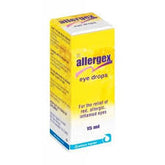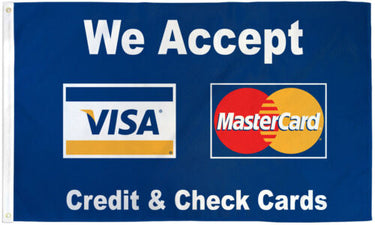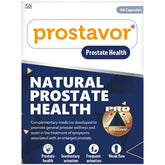Eczema (varicose)
Varicose eczema, also known as stasis dermatitis or gravitational eczema, is a skin condition that occurs in individuals with varicose veins or other circulatory issues. This form of eczema typically affects the lower legs and is associated with poor blood flow, leading to inflammation and skin changes.
Definition
Varicose eczema is a chronic skin condition characterized by inflammation, itching, and discoloration of the skin on the lower legs. It often occurs in conjunction with varicose veins, chronic venous insufficiency, or other conditions that impair blood flow.
Causes
Varicose eczema is primarily caused by poor circulation in the legs, leading to increased pressure in the veins. Contributing factors include:
- Varicose Veins: Swollen, twisted veins that impair blood flow.
- Chronic Venous Insufficiency: Condition where veins struggle to send blood from the legs back to the heart.
- Deep Vein Thrombosis (DVT): Blood clots in the deep veins, leading to chronic venous insufficiency.
- Obesity: Excess weight puts additional pressure on the veins.
- Prolonged Standing or Sitting: Extended periods of immobility can worsen circulation.
- Age: Risk increases with age due to weakening vein walls and valves.
- Family History: Genetic predisposition to vein problems and poor circulation.
Symptoms
Varicose eczema presents with several characteristic symptoms:
- Itching: Intense itching, often leading to scratching and further irritation.
- Redness and Inflammation: Red, swollen skin typically on the lower legs.
- Dry, Scaly Skin: Areas of dry, flaky, or crusted skin.
- Discoloration: Brownish discoloration of the skin due to hemosiderin deposition from leaking veins.
- Swelling: Swelling in the lower legs and ankles.
- Weeping or Crusting: Oozing of clear or yellowish fluid, which can crust over.
- Pain or Discomfort: Aching or throbbing pain in the affected area.
- Skin Thickening: Chronic inflammation can lead to thickened, leathery skin.
Diagnosis
Diagnosing varicose eczema involves:
- Medical History: Reviewing symptoms, medical history, and any underlying vein or circulatory issues.
- Physical Examination: Visual examination of the skin and affected veins.
- Doppler Ultrasound: Imaging test to assess blood flow and check for vein problems or blood clots.
- Patch Testing: In some cases, patch tests may be done to rule out allergic contact dermatitis.
Treatment
Treatment for varicose eczema focuses on improving circulation and managing skin symptoms:
-
Compression Therapy:
- Compression Stockings: Help improve blood flow and reduce swelling.
- Leg Elevation: Elevating the legs to reduce pressure and swelling.
-
Topical Treatments:
- Corticosteroid Creams: Reduce inflammation and itching.
- Emollients: Moisturize and repair the skin barrier.
- Antibiotic Creams: If secondary infection is present.
-
Oral Medications:
- Antihistamines: Help relieve itching and improve sleep.
- Antibiotics: For treating secondary bacterial infections.
-
Wound Care:
- Dressings: Special dressings for weeping or crusted areas to promote healing and prevent infection.
-
Lifestyle Changes:
- Weight Management: Maintaining a healthy weight to reduce pressure on the veins.
- Exercise: Regular exercise to improve circulation and overall vein health.
- Avoiding Prolonged Standing or Sitting: Taking breaks to move and stretch the legs.
-
Surgical and Medical Procedures:
- Sclerotherapy: Injection of a solution to close off varicose veins.
- Laser Therapy: Using laser energy to treat varicose veins.
- Vein Stripping: Surgical removal of severe varicose veins.
Prevention
Preventive measures to reduce the risk of varicose eczema include:
- Wearing Compression Stockings: To improve circulation and reduce swelling.
- Maintaining a Healthy Weight: To reduce pressure on the veins.
- Regular Exercise: To promote good circulation and vein health.
- Elevating the Legs: Periodically elevating the legs to reduce pressure and improve blood flow.
- Avoiding Tight Clothing: Especially around the legs and waist, which can restrict circulation.
Complications
Potential complications of untreated varicose eczema include:
- Ulcers: Chronic inflammation and poor circulation can lead to the development of venous ulcers.
- Infection: Increased risk of bacterial skin infections due to broken skin and oozing.
- Chronic Skin Changes: Permanent skin thickening, discoloration, and scarring.
- Lipodermatosclerosis: Hardening and tightening of the skin and tissues due to chronic inflammation.
When to See a Doctor
Consult a healthcare provider if you experience:
- Severe Itching or Discomfort: Intense itching that interferes with daily activities or sleep.
- Persistent Symptoms: Symptoms that do not improve with over-the-counter treatments.
- Signs of Infection: Increased redness, warmth, swelling, or pus.
- Non-Healing Ulcers: Wounds that do not heal or recur frequently.
Coping and Support
Living with varicose eczema can be challenging, but the following strategies can help:
- Education: Learning about the condition and its triggers.
- Support Groups: Joining support groups for individuals with eczema or venous insufficiency.
- Stress Management: Practicing stress-reducing techniques like yoga, meditation, or deep breathing exercises.
- Consistent Skincare Routine: Establishing a routine with gentle, moisturizing products to manage symptoms.
Conclusion
Varicose eczema is a chronic skin condition associated with poor circulation in the lower legs. Understanding the causes, symptoms, and management strategies can help individuals effectively control their eczema and improve their quality of life. Regular consultations with a healthcare provider and adherence to a tailored treatment plan are essential for managing this condition.
In summary, varicose eczema requires a comprehensive approach to treatment and prevention. By improving circulation, maintaining a proper skincare routine, and seeking medical advice when necessary, individuals can manage their symptoms and reduce the frequency of flare-ups, leading to healthier skin and improved well-being.
- Complication of Eczema (varicose)
- Diagnosis of Eczema (varicose)
- Eczema (varicose)
- Eczema (varicose) myths
- How is Eczema (varicose) treated?
- Medicine for Eczema (varicose)
- Remedies for Eczema (varicose)
- Support for Eczema (varicose)
- Symptoms associated with Eczema (varicose)
- The best British Online Pharmacy
- Top 10 UK Pharmacies
- Treatment for Eczema (varicose)
- What causes Eczema (varicose)
- What is Eczema (varicose)
- Where can I buy medicine for Eczema (varicose) in the UK
- ZimSeller Pharmacy



















